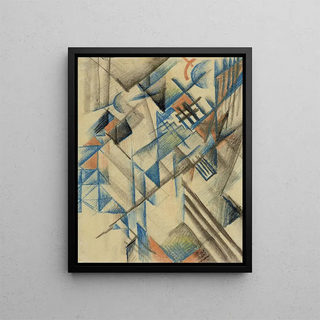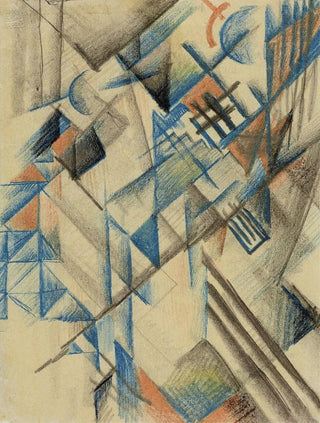Art print | Résumé form II - August Macke


View from behind

Frame (optional)
In the vast panorama of modern art, "Formulaire de résumé II" by August Macke stands out for its vibrant palette and bold composition. This artwork, emblematic of the expressionist movement, invites viewers to immerse themselves in a world where emotions and sensations are conveyed through abstract forms and dazzling colors. Macke, who captured the essence of his era, offers us a window into a universe where art becomes a language in its own right, transcending mere representations of reality. Contemplating this art print, one immediately feels the evocative power of the piece, which seems to vibrate to the rhythm of emerging modernity.
Style and uniqueness of the artwork
"Formulaire de résumé II" is characterized by a daring and innovative approach. Macke, a true pioneer, uses pure colors and geometric shapes to create a visual harmony that captivates and engages. The shades, both luminous and contrasting, intertwine and respond to each other, offering a dynamic that captures the eye and the mind. The piece does not merely depict a subject; it expresses an emotion, a sensation, an atmosphere. The simplified forms and flowing lines reflect a desire to free art from the constraints of traditional realism, paving the way for a new form of expression. This unique style, blending abstraction and expression, makes "Formulaire de résumé II" a masterpiece that continues to inspire and delight.
The artist and his influence
August Macke, an emblematic figure of German expressionism, made his mark on his era with an innovative perspective on the world around him. Born in 1887, he was quickly influenced by the artistic movements of his time, notably Fauvism and Cubism. His ability to synthesize these influences while developing a personal language allowed him to stand out within the early 20th-century art scene. Macke was also a passionate advocate of art as a means of personal and collective expression, seeking to translate human emotions through his works. His career, though tragically cut short by World War I, left a

Matte finish

View from behind

Frame (optional)
In the vast panorama of modern art, "Formulaire de résumé II" by August Macke stands out for its vibrant palette and bold composition. This artwork, emblematic of the expressionist movement, invites viewers to immerse themselves in a world where emotions and sensations are conveyed through abstract forms and dazzling colors. Macke, who captured the essence of his era, offers us a window into a universe where art becomes a language in its own right, transcending mere representations of reality. Contemplating this art print, one immediately feels the evocative power of the piece, which seems to vibrate to the rhythm of emerging modernity.
Style and uniqueness of the artwork
"Formulaire de résumé II" is characterized by a daring and innovative approach. Macke, a true pioneer, uses pure colors and geometric shapes to create a visual harmony that captivates and engages. The shades, both luminous and contrasting, intertwine and respond to each other, offering a dynamic that captures the eye and the mind. The piece does not merely depict a subject; it expresses an emotion, a sensation, an atmosphere. The simplified forms and flowing lines reflect a desire to free art from the constraints of traditional realism, paving the way for a new form of expression. This unique style, blending abstraction and expression, makes "Formulaire de résumé II" a masterpiece that continues to inspire and delight.
The artist and his influence
August Macke, an emblematic figure of German expressionism, made his mark on his era with an innovative perspective on the world around him. Born in 1887, he was quickly influenced by the artistic movements of his time, notably Fauvism and Cubism. His ability to synthesize these influences while developing a personal language allowed him to stand out within the early 20th-century art scene. Macke was also a passionate advocate of art as a means of personal and collective expression, seeking to translate human emotions through his works. His career, though tragically cut short by World War I, left a






